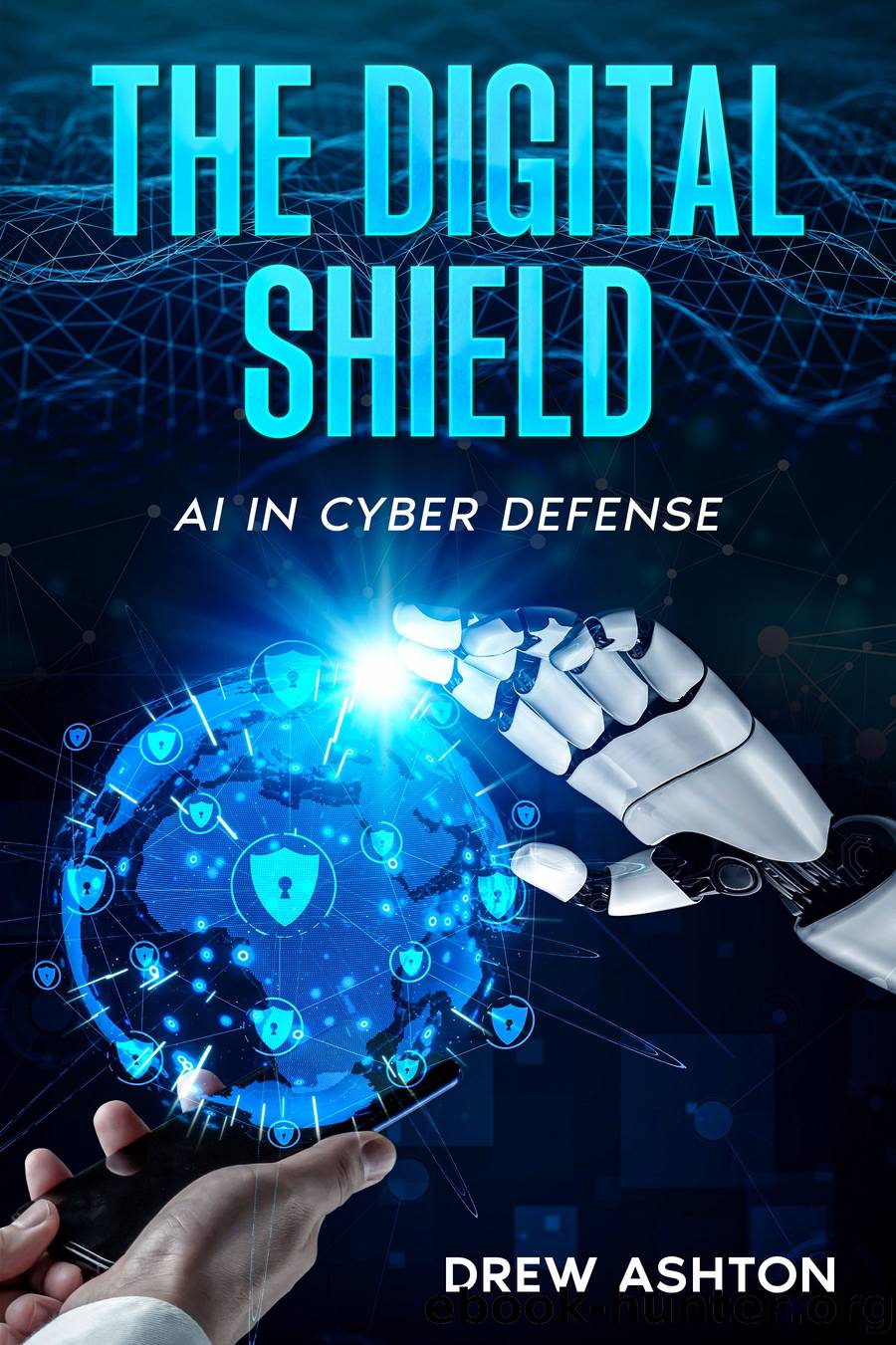The Digital Shield by Drew Ashton

Author:Drew Ashton
Format: epub
Publisher: eBookIt.com
Crisis Management
When a cybersecurity breach occurs, it's not just about containing the immediate damageâit's about managing the entire crisis scenario with precision and foresight. AI is proving to be a formidable ally in this area, revolutionizing how we approach crisis management from the ground up. One core strength of AI lies in its ability to rapidly analyze vast amounts of data and identify threats in real-time, which is critical for effective crisis management.
In the initial moments of a cyber crisis, the speed and accuracy of response are crucial. AI-driven systems can immediately start working on containment by isolating affected segments of a network. Real-time monitoring systems powered by AI can detect irregular activities that signify a breach, allowing for swift action. These systems can place compromised accounts on lockdown, terminate malicious processes, or block harmful traffic within seconds. Speed is of the essence, and AI's rapid response capabilities offer organizations a crucial head start.
Beyond immediate containment, AI plays a central role in the forensic investigation that follows a cybersecurity incident. AI-driven forensics tools can sift through terabytes of logs, network flows, and other data sources to piece together the sequence of events that led to the breach. This investigative phase provides vital insights into the nature of the attack vectors employed and the vulnerabilities exploited. Understanding these elements is critical to not only mitigate the current crisis but also to bolster defenses against future threats.
AI can also aid in managing public relations during a cyber crisis. Natural Language Processing (NLP) algorithms can analyze social media chatter and news articles to gauge public sentiment about the incident. This real-time sentiment analysis allows organizations to tailor their communication strategies, ensuring timely and effective messaging. Well-crafted messages can help maintain customer trust and mitigate reputational damage.
Additionally, AI can streamline coordination among internal teams and external stakeholders. Automated communication platforms can keep all parties informed about the current status of the crisis, steps being taken to manage it, and what might be required from them. These platforms ensure that everyone remains on the same page, reducing confusion and delays that could exacerbate the crisis.
In more advanced scenarios, AI can simulate various crisis scenarios to prepare organizations in advance. These simulations can include different types of cyber attacks, operational disruptions, and even insider threats. By running these simulations, organizations can identify potential weaknesses in their crisis response plans and make necessary adjustments. The ability to anticipate and prepare for various crisis scenarios means that when a real incident occurs, the response can be more efficient and effective. AI can also provide predictive insights, which is crucial for proactive crisis management. Analyzing historical data and recognizing patterns allows AI to forecast potential future incidents. This predictive capability can help organizations anticipate and mitigate risks before they materialize, adding a preventive layer to crisis management strategies.
Another critical role of AI in crisis management is in post-incident analysis. After the threat has been neutralized, AI systems can generate comprehensive reports detailing what happened, how it was handled, and what could be done better next time.
Download
This site does not store any files on its server. We only index and link to content provided by other sites. Please contact the content providers to delete copyright contents if any and email us, we'll remove relevant links or contents immediately.
Algorithms of the Intelligent Web by Haralambos Marmanis;Dmitry Babenko(16232)
Jquery UI in Action : Master the concepts Of Jquery UI: A Step By Step Approach by ANMOL GOYAL(9385)
Test-Driven Development with Java by Alan Mellor(7729)
Data Augmentation with Python by Duc Haba(7605)
Principles of Data Fabric by Sonia Mezzetta(7375)
Learn Blender Simulations the Right Way by Stephen Pearson(7294)
Microservices with Spring Boot 3 and Spring Cloud by Magnus Larsson(7137)
Hadoop in Practice by Alex Holmes(6587)
RPA Solution Architect's Handbook by Sachin Sahgal(6513)
The Infinite Retina by Robert Scoble Irena Cronin(6215)
Big Data Analysis with Python by Ivan Marin(5930)
Life 3.0: Being Human in the Age of Artificial Intelligence by Tegmark Max(5506)
Pretrain Vision and Large Language Models in Python by Emily Webber(4893)
Infrastructure as Code for Beginners by Russ McKendrick(4651)
Functional Programming in JavaScript by Mantyla Dan(4432)
WordPress Plugin Development Cookbook by Yannick Lefebvre(4379)
The Age of Surveillance Capitalism by Shoshana Zuboff(4241)
Embracing Microservices Design by Ovais Mehboob Ahmed Khan Nabil Siddiqui and Timothy Oleson(4146)
Applied Machine Learning for Healthcare and Life Sciences Using AWS by Ujjwal Ratan(4132)
